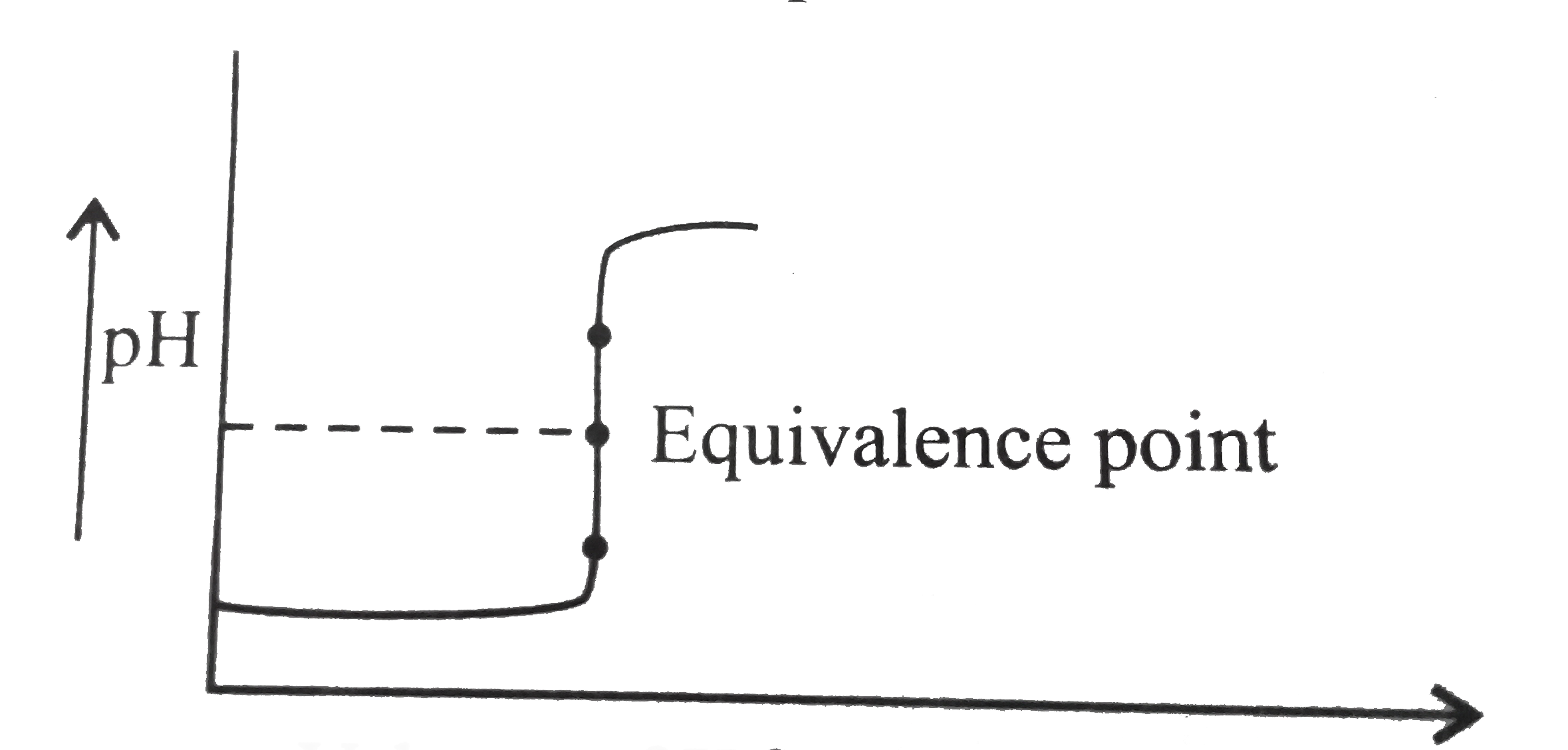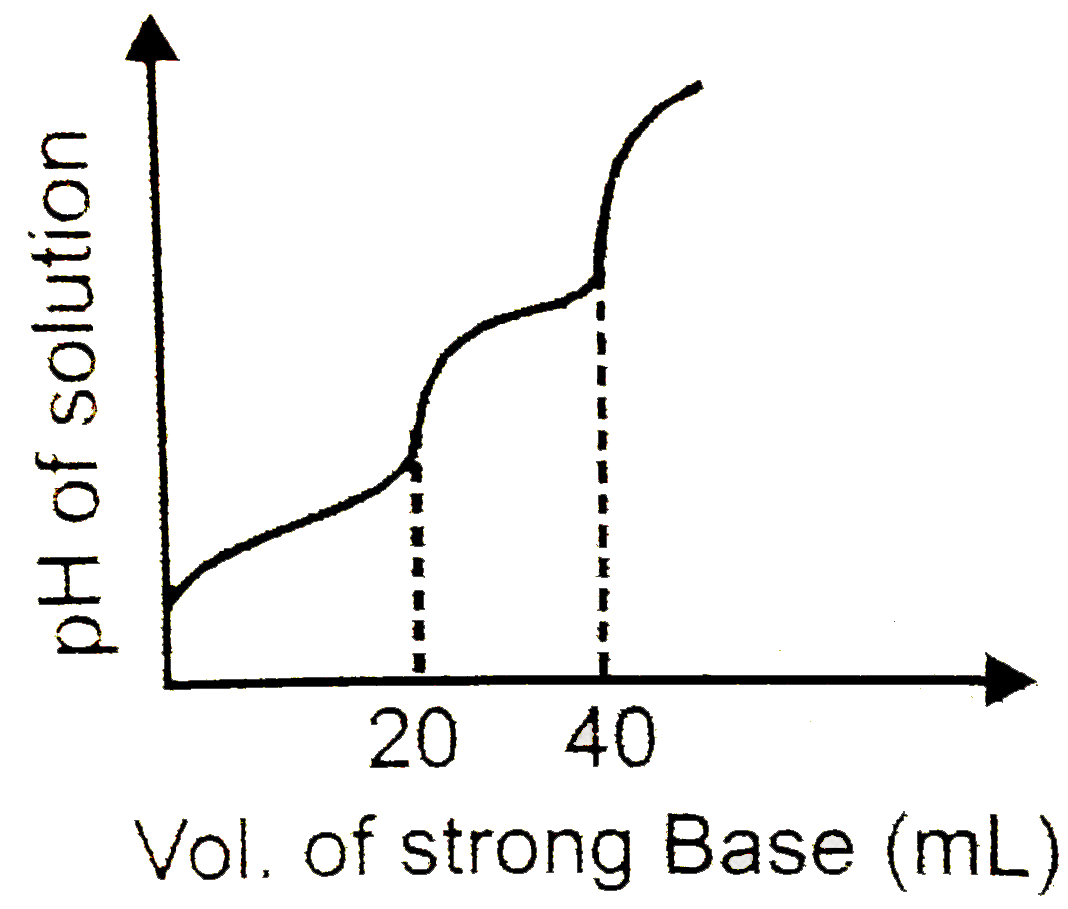In which of the following acid-base titration, the pH is greater than 8 at the equivalence point ?
Aceitic acid vs ammonia
Acetic acid vs sodium hydroxide
Hydrochloric acid vs ammonia
Hydrochloric acid vs sodium hydroxide
The correct Answer is:B
To determine in which acid-base titration the pH is greater than 8 at the equivalence point, we will analyze each option step by step.
Step 1: Analyze the first option - Acetic Acid vs. Ammonia
- Acetic Acid (CH3COOH) is a weak acid.
- Ammonia (NH3) is a weak base.
- When they react, they form Ammonium Acetate (CH3COONH4), which is a salt of a weak acid and a weak base.
- At the equivalence point, the solution will be neutral, with a pH of approximately 7 because the weak acid and weak base neutralize each other.
Conclusion for Option 1: pH = 7 (not greater than 8).
Step 2: Analyze the second option - Acetic Acid vs. Sodium Hydroxide
- Acetic Acid (CH3COOH) is a weak acid.
- Sodium Hydroxide (NaOH) is a strong base.
- They react to form Sodium Acetate (CH3COONa), which is a salt of a weak acid and a strong base.
- At the equivalence point, the concentration of OH⁻ ions will be higher than H⁺ ions, resulting in a basic solution. Therefore, the pH will be greater than 7 and can be significantly greater than 8.
Conclusion for Option 2: pH > 8 (this is a potential answer).
Step 3: Analyze the third option - Hydrochloric Acid vs. Ammonia
- Hydrochloric Acid (HCl) is a strong acid.
- Ammonia (NH3) is a weak base.
- They react to form Ammonium Chloride (NH4Cl), which is a salt of a strong acid and a weak base.
- At the equivalence point, the solution will be acidic because the salt will hydrolyze to produce H⁺ ions, resulting in a pH less than 7.
Conclusion for Option 3: pH < 7 (not greater than 8).
Step 4: Analyze the fourth option - Hydrochloric Acid vs. Sodium Hydroxide
- Hydrochloric Acid (HCl) is a strong acid.
- Sodium Hydroxide (NaOH) is a strong base.
- They react to form Sodium Chloride (NaCl) and water.
- At the equivalence point, the solution will be neutral, with a pH of approximately 7, as both the strong acid and strong base completely neutralize each other.
Conclusion for Option 4: pH = 7 (not greater than 8).
Final Conclusion:
The only titration where the pH is greater than 8 at the equivalence point is Option 2: Acetic Acid vs. Sodium Hydroxide.
Summary of Steps:
1. Identify the nature of acids and bases in each option.
2. Determine the product formed at the equivalence point.
3. Evaluate the pH based on the strength of the acid and base involved.
- Acetic Acid (CH3COOH) is a weak acid.
- Ammonia (NH3) is a weak base.
- When they react, they form Ammonium Acetate (CH3COONH4), which is a salt of a weak acid and a weak base.
- At the equivalence point, the solution will be neutral, with a pH of approximately 7 because the weak acid and weak base neutralize each other.
- Acetic Acid (CH3COOH) is a weak acid.
- Sodium Hydroxide (NaOH) is a strong base.
- They react to form Sodium Acetate (CH3COONa), which is a salt of a weak acid and a strong base.
- At the equivalence point, the concentration of OH⁻ ions will be higher than H⁺ ions, resulting in a basic solution. Therefore, the pH will be greater than 7 and can be significantly greater than 8.
- Hydrochloric Acid (HCl) is a strong acid.
- Ammonia (NH3) is a weak base.
- They react to form Ammonium Chloride (NH4Cl), which is a salt of a strong acid and a weak base.
- At the equivalence point, the solution will be acidic because the salt will hydrolyze to produce H⁺ ions, resulting in a pH less than 7.
- Hydrochloric Acid (HCl) is a strong acid.
- Sodium Hydroxide (NaOH) is a strong base.
- They react to form Sodium Chloride (NaCl) and water.
- At the equivalence point, the solution will be neutral, with a pH of approximately 7, as both the strong acid and strong base completely neutralize each other.
The only titration where the pH is greater than 8 at the equivalence point is Option 2: Acetic Acid vs. Sodium Hydroxide.
1. Identify the nature of acids and bases in each option.
2. Determine the product formed at the equivalence point.
3. Evaluate the pH based on the strength of the acid and base involved.
Topper's Solved these Questions
- IONIC EQUILIBRIUMBOOK - CENGAGE CHEMISTRY ENGLISHCHAPTER - IONIC EQUILIBRIUMEXERCISE - Ex 8.5
6 Videos
- IONIC EQUILIBRIUMBOOK - CENGAGE CHEMISTRY ENGLISHCHAPTER - IONIC EQUILIBRIUMEXERCISE - Exercises Subjective (Weak Acid And Weak Bases)
15 Videos
- IONIC EQUILIBRIUMBOOK - CENGAGE CHEMISTRY ENGLISHCHAPTER - IONIC EQUILIBRIUMEXERCISE - Ex 8.3
38 Videos
- HYDROGEN, WATER AND HYDROGEN PEROXIDEBOOK - CENGAGE CHEMISTRY ENGLISHCHAPTER - HYDROGEN, WATER AND HYDROGEN PEROXIDEEXERCISE - Subjective Archive (Subjective)
3 Videos
- ISOMERISMBOOK - CENGAGE CHEMISTRY ENGLISHCHAPTER - ISOMERISMEXERCISE - Assertion-Reasoning Type
1 Videos
Similar Questions
In which of the following case pH is greater than 7 ?
View SolutionWhich of the following are true for an acid- base titration?
View SolutionWhich of the following is/are true for an acid- base titration?
View SolutionWhat is the realtionship between [KIN and pH at the equivalence point ?
View SolutionAcid-base indicator such as methy1 orange, phenolphthalein, and bromothymol blue ate substances which change colour accroding to the hydrogen ion concentration of the solution to which they are added.
Most indicators are weak acids (or more rarely weak base) in which the undissociated and dissociated forms have different and distinct colours. If methy1 orange is used as the examples and the un-dissociated forms is written as HMO, then dissociation occurs as shown below:
Reaction: HMO⇔H⊕+MOΘRedColourlessYellow
The indicator should have a sharp colour change with the equivalence point of the titration. Usually the colour change of the indicator occurs over a range of about two pH units. It should be noted that the eye cannot detect the exact end point of the tiytration. The pKa of the indicator should be near the pH of the solution at the equivalance point.
Which of the following sitution exists at the equivalence point of titration?
View SolutionAn acid-base titration consists of the controlled addition of a dissolved base to a dissolved acid (or the reverse). Acid and base react rapidly to neutralize each other. At the equivalence point, equivalents of reacting substances are equal. The pH during a titration changes every time with a drop of titrant added, but the rate of this change varies enormously. A titration curve, graph of pH as a function of the volume of titrant, displays in detail how the pH changes over the course of an acid base titration. Significantly. the pH changes most rapidly near the equivalence point. The exact shape of a titration curve depends on the KaandKb of acid and base
The suitable indicator for this titration will be:
View SolutionIn acid-base titration react rapidly to neutralise each other. Equivalence point is a point at which the acid and the base (or oxidising agent and reducing agent) have beem added in equivalent quantities. The end point in the point at which the titration stops. since the purpose of the indicator is to stop the titration close to the point at which the acid and base were added in equivalent quantities, it is important that the equivalent point and the end point be as close as must change colour at a pH close to that of a solution of the salt of the acid base. Singificantly, the pH changes most rapidly near the equivalent point. The exact shape of a titration curve depends on Ka and Kb of acid and base.

The pH at equivalence point is
View SolutionAssertion : In a titration of weak monoprotic acid with strong base, the pH at the half equivalence point is pKa.
Reason : At half equivalence point, it will form acidic buffer at its maximum capacity where [acid]=[salt].
View SolutionDuring the titration of a weak diprotic acid (H2A) against a strong base (NaOH), the pH of the solution half-way to the first equivalent point and that at the first equivalent point are given respectively by:
View Solution10 mL of H2A(weak diprotic acid) solution is titrated against 0.1M NaOH. pH of the solution is plotted against volume of strong base added and following observation is made. If pH of the solution at first equivalence point is pH1 and at second equivalence point is pH2. Calculate the value of (pH2−pH1) at 25∘C
Given for H2A,pKa1 =4.6 and pKa2 =8, log 25=1.4
View Solution
